Mandu, often referred to as the “City of Joy” and historically known as Mandav/Mandavgarh, is a quaint yet majestic place located in the central Indian state of Madhya Pradesh. This ancient fortress city, perched on the Vindhya Range, is an architectural marvel that echoes the grandeur of its medieval past. Do you want to explore Mandu then in this blog I will discuss in detail. Read to the end in this blog Here’s a final guide to exploring Mandu:
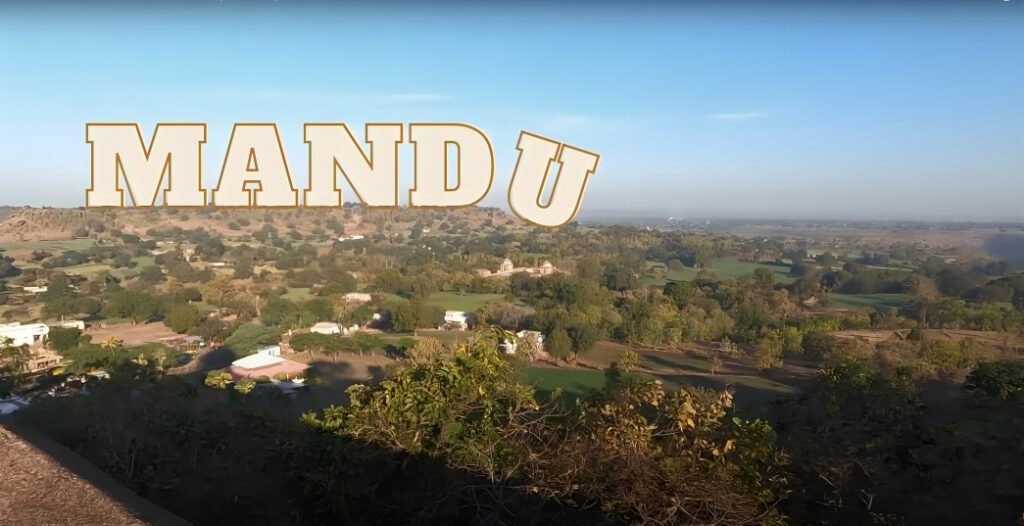
Table of Contents
Historical Overview
Mandu’s history is as rich and layered as its architectural splendors. The earliest references to Mandu date back to the 6th century. However, it was in the 10th and 11th centuries that Mandu began to gain prominence under the Paramara dynasty, especially during the reign of Raja Bhoj.
Early History: Mandu’s strategic location made it an important city in ancient times. It was first referenced in the 6th century, indicating its significance even in early Indian history.
Paramara Dynasty: Under the rule of the Paramaras, especially Raja Bhoj, Mandu flourished as a center of learning and culture. Raja Bhoj was a scholar and a patron of the arts.
Dilawar Khan Ghuri: In the early 15th century, Dilawar Khan Ghuri, the Afghan governor of Malwa, captured Mandu. He declared independence from the Delhi Sultanate and established Mandu as the capital of the Malwa Sultanate.
Hoshang Shah: Dilawar Khan’s son, Hoshang Shah, succeeded him and continued to develop Mandu. Under his rule, Mandu became a thriving center of trade, culture, and architecture.
Mughal Annexation: In the mid-16th century, the Mughal Emperor Akbar annexed Mandu, incorporating it into the vast Mughal Empire. This period saw the addition of several Mughal architectural features to Mandu’s existing structures.
Top Attractions
Nilkanth Mahadev Temple

Cultural Heritage: The temple stands as a testament to the syncretism of Hindu and Muslim cultures in Mandu, reflecting the era’s religious tolerance and cultural integration.
Religious Significance: Dedicated to Lord Shiva, Nilkantha Mahadev Temple is a prominent Hindu temple in Mandu. It is a revered site for devotees, illustrating the religious diversity and historical significance of the region.
Historical Architecture: Built by Akbar’s Hindu wife, Rani Rupmati, the temple combines Mughal and traditional Hindu architectural elements. Its serene setting and intricate carvings make it an important religious and historical monument.
Jami Masjid
Description: Inspired by the great mosque of Damascus, the Jami Masjid in Mandu is a grand example of Afghan architecture.
Architectural Grandeur: The mosque features a large courtyard, a prayer hall with massive domes, and intricately carved pillars, showcasing the architectural prowess of the period.
Historical Influence: The design of the Jami Masjid reflects the influence of Middle Eastern architecture, particularly that of the Great Mosque of Damascus.
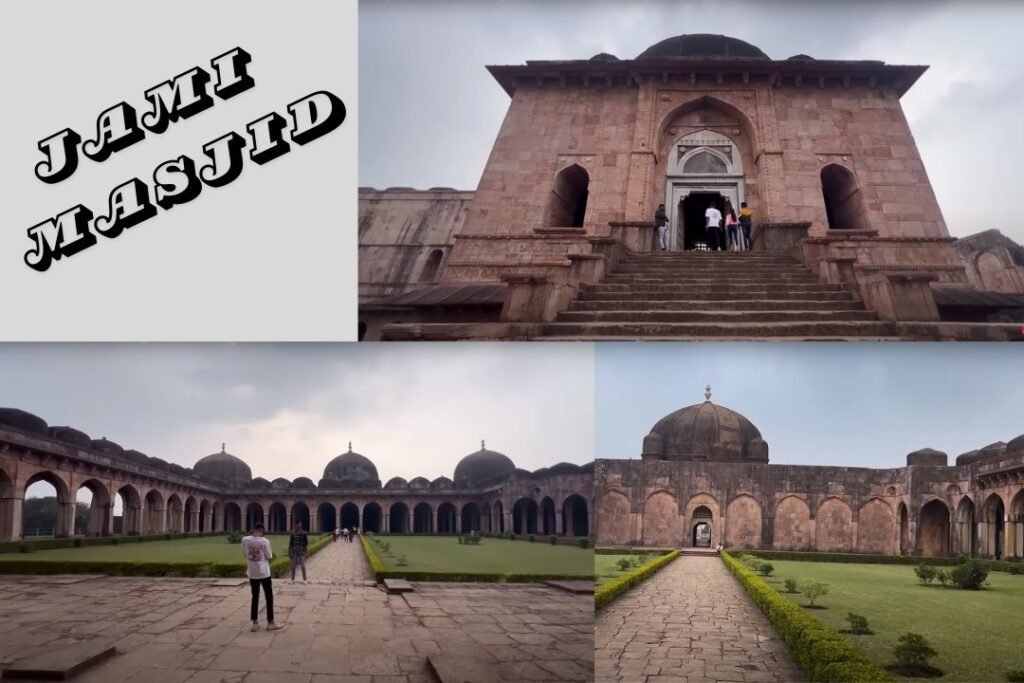
Cultural Importance: As a major religious site, the mosque played a significant role in the spiritual and community life of Mandu’s inhabitants.
Preservation: The mosque has been well-preserved, allowing visitors to appreciate its architectural beauty and historical significance.
Hoshang Shah’s Tomb
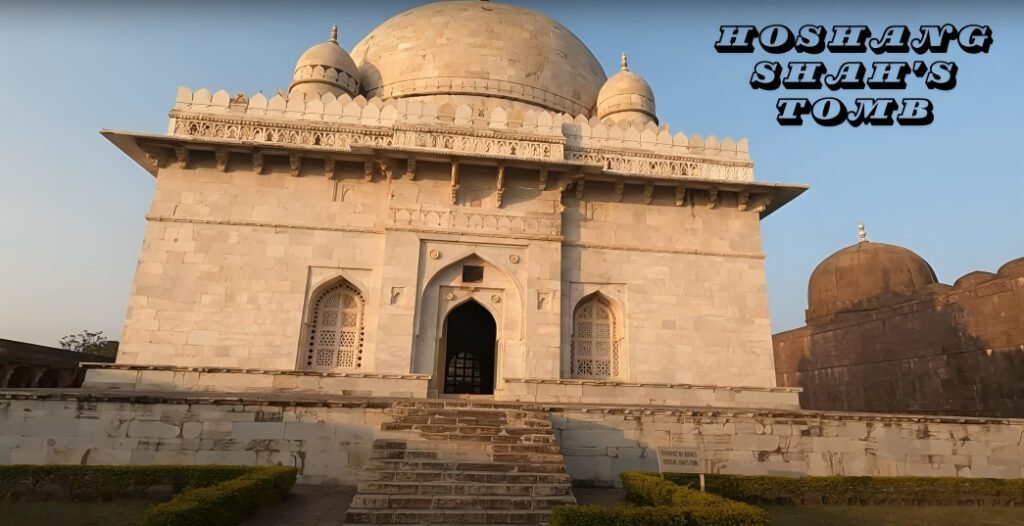
Symmetry: The tomb’s symmetrical layout and harmonious proportions are prime examples of the architectural precision of the time.
Historical Importance: As the final resting place of Hoshang Shah, the tomb is an important historical site, reflecting the legacy of the Malwa Sultanate.
Description: This mausoleum is one of India’s earliest marble structures and is believed to have inspired the design of the Taj Mahal.
Architectural Influence: The tomb’s design elements, such as its dome, arched doorways, and marble lattice work, influenced later Mughal architecture, including the Taj Mahal.
Craftsmanship: The tomb is noted for its intricate craftsmanship, with detailed marble work and decorative motifs that showcase the artistry of the period.
Ashrafi Mahal
Historical Significance: Ashrafi Mahal, which means “Palace of Gold Coins,” was originally conceived as a madrasa (Islamic school) by Mahmud Shah I Khilji. It later served as his grand palace and tomb, symbolizing the grandeur of the Malwa Sultanate.
Architectural Features: The structure showcases Indo-Islamic architecture, with a large courtyard, arched hallways, and intricately designed windows and doorways. Though now in ruins, the architectural elements reflect the opulence and style of the era.
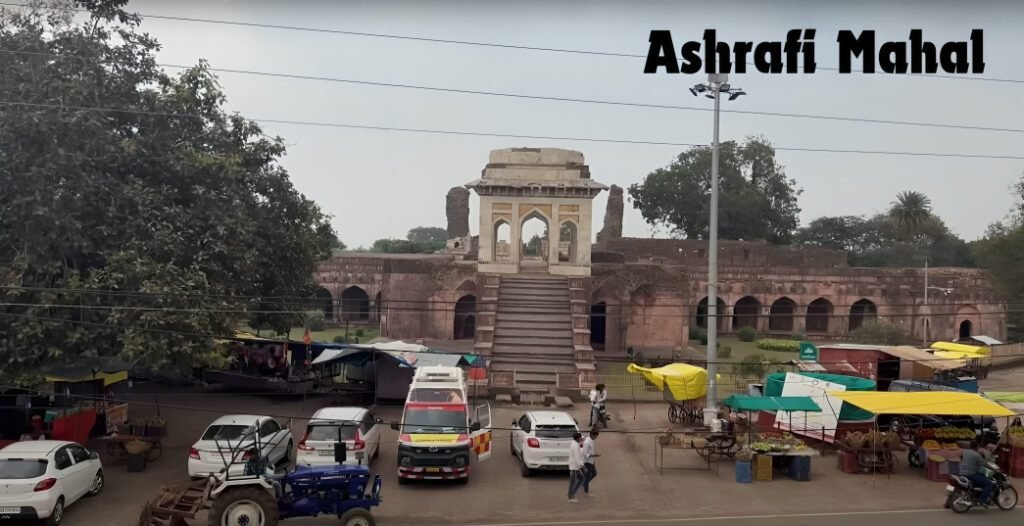
Cultural Legacy: Despite its dilapidated state, Ashrafi Mahal remains a significant cultural and historical landmark in Mandu. It tells the story of the region’s rich history and the artistic achievements of the Malwa Sultanate.
Jahaz Mahal (Ship Palace)
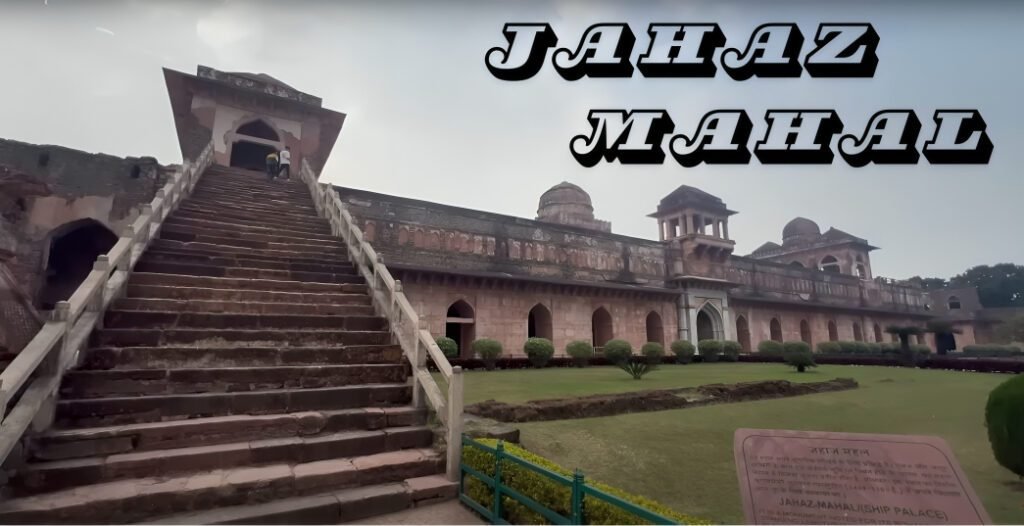
Photographic Opportunities: Its reflection in the water at sunrise and sunset creates a mesmerizing sight, making it a favorite spot for photographers.
Cultural Impact: The palace is a symbol of the luxurious lifestyle of the rulers of Mandu and their architectural prowess.
Description: The Jahaz Mahal, or Ship Palace, is one of Mandu’s most iconic structures. Built by Sultan Ghiyas-ud-din Khilji in the late 15th century, the palace was designed to resemble a ship floating on water.
Historical Significance: It was built to house the sultan’s large harem, which included women from Turkey, Persia, and India, demonstrating the cultural amalgamation of the era.
Architectural Features: The palace’s ship-like structure, expansive terraces, balconies, and pavilions reflect the architectural ingenuity of the time. It has excellent water storage structures.
Taveli Mahal
Museum and Heritage Site: Taveli Mahal, now housing a museum, offers visitors insights into the rich history and cultural heritage of Mandu. The museum displays artifacts, sculptures, and relics from the region’s past.
Architectural Significance: The structure itself is an example of medieval architecture, with elegant halls, courtyards, and decorative elements that reflect the grandeur of Mandu’s royal era.
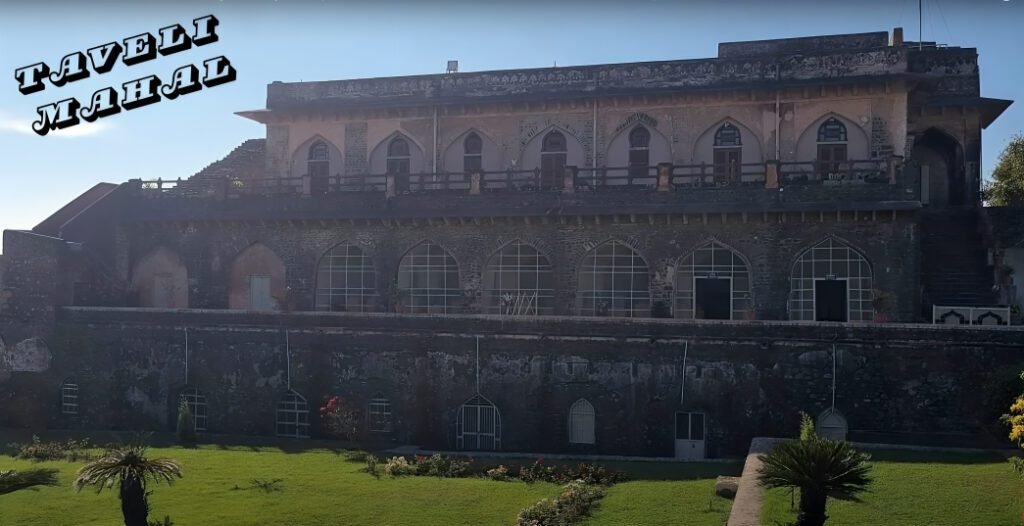
Educational Value: Taveli Mahal serves an educational purpose, providing historical context and preserving the legacy of Mandu through its exhibits and collections. It is an important stop for those looking to understand the depth of Mandu’s history and culture.
Hindu Baoli (Step-well)
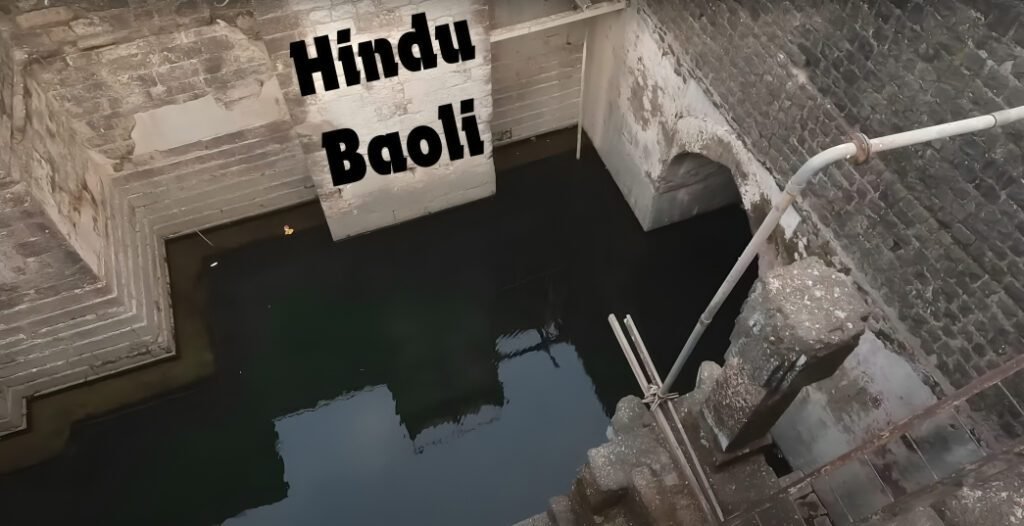
Social Importance: Like other step-wells, it was an important social structure where people gathered for daily activities, rituals, and social interaction, illustrating the central role of water in community life.
Architectural Style: Hindu Baoli, another step-well in Mandu, showcases the traditional Hindu architectural style. Its steps and carvings are influenced by Hindu motifs, differing from the Islamic styles seen in other structures in Mandu.
Cultural Integration: This step-well highlights the cultural and religious diversity of Mandu. It served not only as a water reservoir but also as a spiritual place, reflecting the syncretic traditions of the region.
Hindola Mahal (Swing Palace)
Description: Known for its unique sloping walls, the Hindola Mahal was part of the royal palace complex and served as a durbar hall during the reign of Hoshang Shah.
Architectural Design: The palace’s inclined walls give it a distinctive swing-like appearance, hence the name Hindola (swing) Mahal.
Historical Usage: It was used as a hall for public audiences and state functions, highlighting its importance in the administrative life of the kingdom.
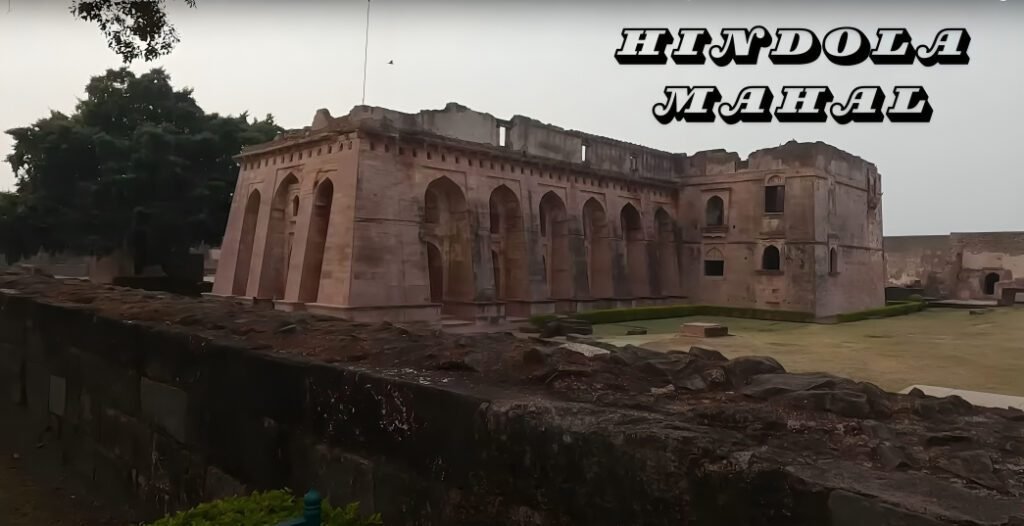
Acoustics: The hall’s design allows for excellent acoustics, enabling clear communication across the space during large gatherings.
Durability: Despite its age, the structure has withstood the test of time, reflecting the advanced engineering skills of its builders.
Champa Baoli (Step-well)
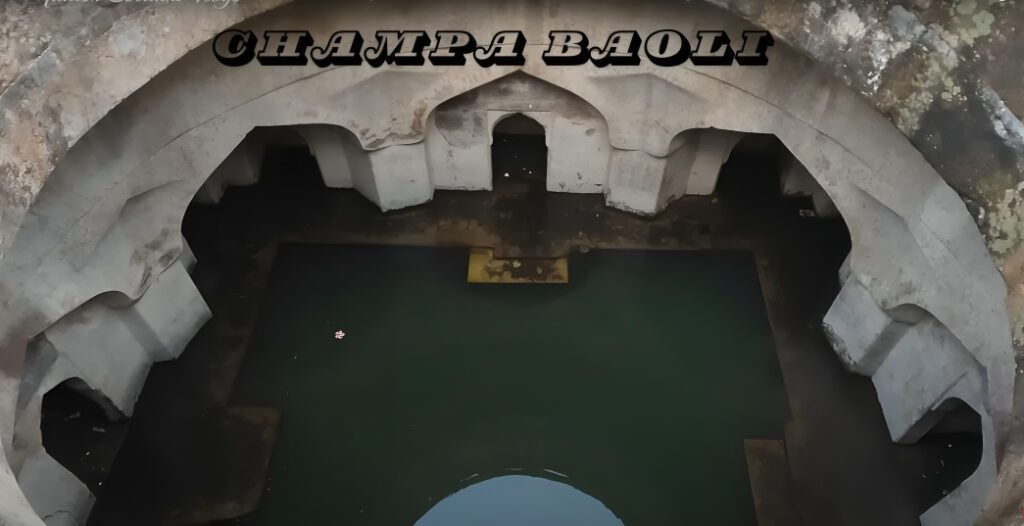
Historical Utility: Beyond its practical use, the step-well was a social and cultural hub, reflecting the advanced understanding of hydrology and the importance of water in sustaining life and community in historical Mandu.
Ingenious Engineering: Champa Baoli is an excellent example of medieval Indian engineering. Step-wells were crucial for water storage and management in arid regions. The baoli’s elaborate design ensured a constant water supply and served as a communal gathering spot.
Unique Structure: The step-well gets its name from the sweet fragrance of the water, which was said to resemble the scent of champa flowers. It features steps leading down to the water, with several levels and chambers providing cool resting places.
Jal Mahal
Scenic Location: Jal Mahal, or Water Palace, is aptly named for its picturesque location amidst water bodies. Built during the reign of Sultan Ghiyas-ud-din Khilji, it served as a pleasure retreat for the royal family.
Architectural Beauty: The palace is a fine example of the blend of Islamic and regional architectural styles, featuring pavilions, terraces, and a surrounding moat. The reflection of the structure in the water adds to its ethereal beauty.
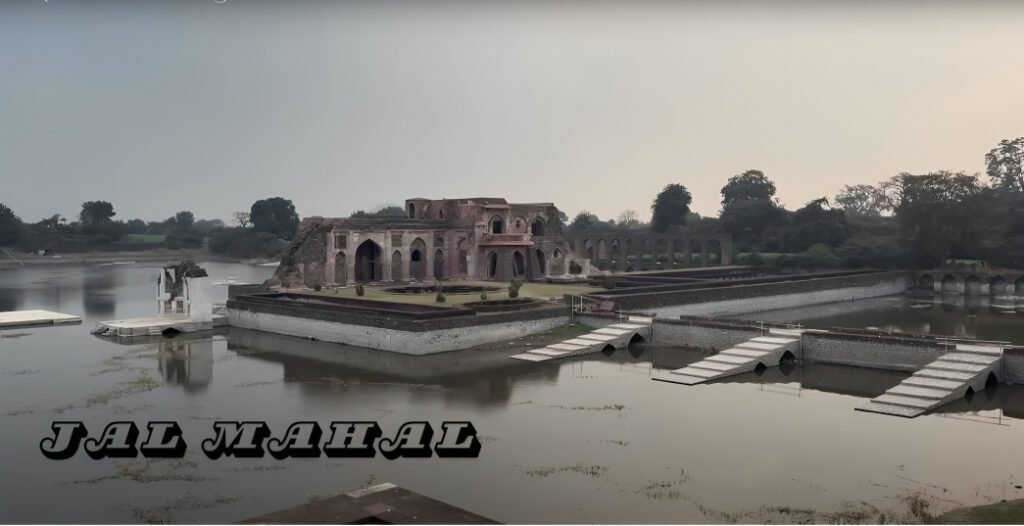
Royal Leisure: Jal Mahal was designed for leisure and relaxation, providing a serene and beautiful environment for the sultan and his entourage, showcasing the luxurious lifestyle of the rulers of Mandu.
Rani Rupmati Pavilion
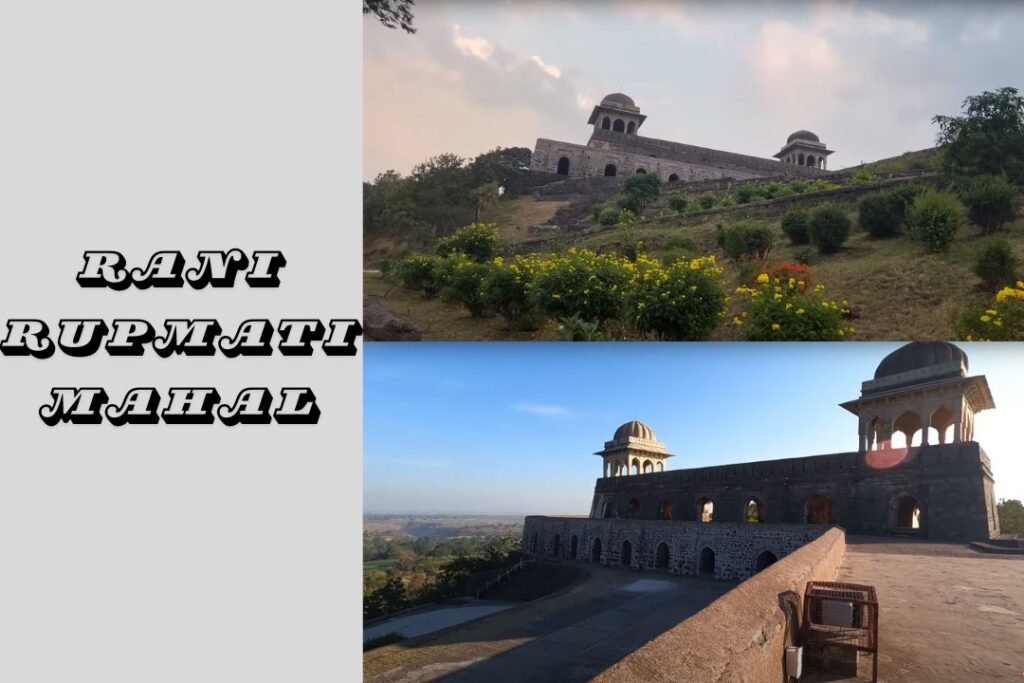
Architectural Details: The structure features high arches, domed pavilions, and open terraces, showcasing the architectural style of the period.
Sunsets: The pavilion is particularly famous for its beautiful sunsets, making it a popular spot for evening visits.
Description: This pavilion stands as a testament to the romantic legend of Rani Rupmati and Baz Bahadur. Built by Baz Bahadur, the last independent ruler of Mandu, the pavilion was meant to provide his beloved Rani Rupmati with a view of the sacred Narmada River.
Legend: The love story between Rani Rupmati and Baz Bahadur adds a layer of romance and intrigue to the site, attracting many visitors.
Scenic Views: Located at a high vantage point, the pavilion offers panoramic views of the Narmada River valley and the surrounding landscape.
Rewa Kund
Sacred Reservoir: Rewa Kund is a revered water reservoir that supplied water to Rani Rupmati’s pavilion. When this Reservoir was built, it was filled with water from Narmada river. Hence this Reservoir is known as Reva Kund. It is associated with the legendary love story of Rani Rupmati and Baz Bahadur, adding a romantic and historical allure to the site.
Historical Utility: The reservoir was an engineering marvel of its time, ensuring a continuous water supply to the royal pavilions and gardens, showcasing the advanced understanding of water management in medieval India.
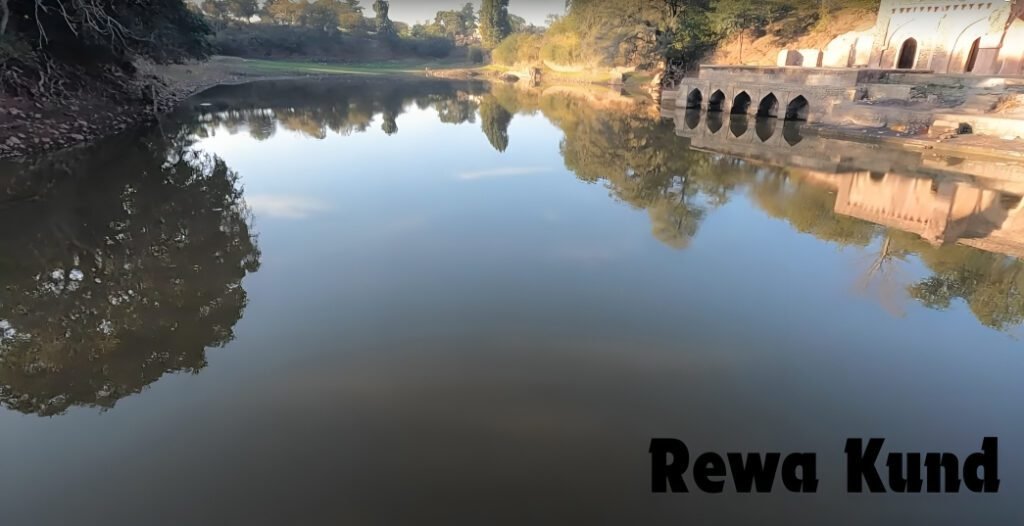
Cultural Significance: Rewa Kund holds cultural and historical significance as part of the larger narrative of Mandu’s royal history. It is a popular spot for tourists, offering a glimpse into the region’s storied past.
Baz Bahadur Palace
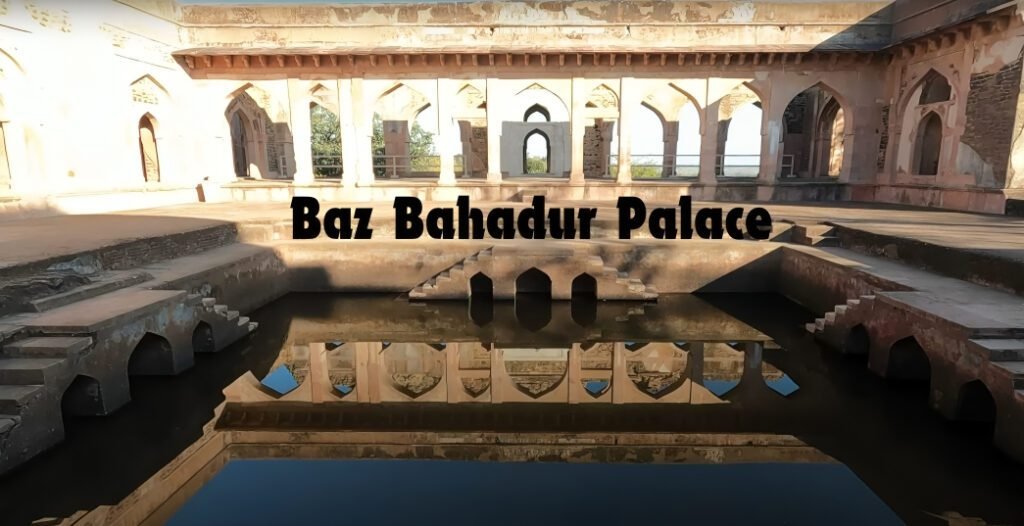
Historical Context: The palace is closely associated with the romantic tale of Baz Bahadur and Rani Rupmati, adding a layer of historical and cultural interest.
Restoration Efforts: Efforts to preserve and restore the palace help maintain its historical and architectural significance for future generations.
Description: Built by Baz Bahadur in the mid-16th century, this palace is a blend of Rajasthani and Mughal architectural styles.
Architectural Style: The palace features open courtyards, spacious halls, and terraces that offer stunning views of the surrounding countryside.
Cultural Significance: The palace reflects the cultural amalgamation of the time, with elements of both Rajasthani and Mughal architecture.
Things to Do
Guided Heritage Walks: Mandu’s rich history and architectural marvels can best be appreciated through guided heritage walks. Local guides provide in-depth insights into the stories, legends, and historical significance of each monument.
Trekking and Nature Walks: The Vindhya Range surrounding Mandu offers various trails for trekking and nature walks. These trails take you through lush greenery, offering panoramic views of the landscape and a chance to explore the natural beauty of the region.
Photography: Mandu’s picturesque ruins, scenic landscapes, and unique architecture make it a photographer’s paradise. The best times for photography are during the early morning and late afternoon when the lighting is ideal.
Bird Watching: The region around Mandu is home to a variety of bird species, making it an ideal spot for bird watching enthusiasts. The wetlands and forests provide a habitat for both resident and migratory birds.
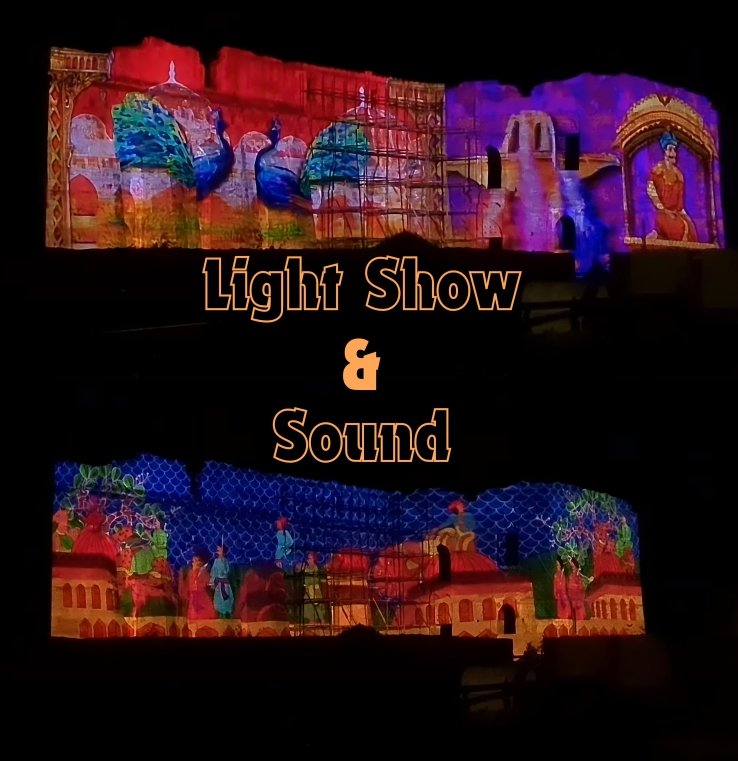
How to Reach Mandu
By Air: The nearest airport is Devi Ahilya Bai Holkar Airport in Indore, which is about 100 km from Mandu. Indore is well connected to major cities of India. You can hire a taxi or take a bus to reach Mandu from the airport.
By Train: The nearest railway station is Indore Railway Station, which is about 95 km from Mandu. Indore is a major railhead with connections to many parts of the country. From the station, you can reach Mandu by road.
By Road:Mandu is well-connected by road to major cities like Indore, Dhar, and Ujjain. Regular buses and taxis are available from these cities to Mandu. The drive from Indore to Mandu is scenic, passing through lush landscapes and quaint villages.
Accommodation
Mandu offers accommodation to suit different budgets and preferences. Some popular options include:
MPT Malwa Resort: A comfortable resort managed by Madhya Pradesh Tourism, offering modern amenities and scenic views of the surroundings. The resort is located close to major attractions, making it a convenient base for exploring Mandu.
Hotel Rupmati: A budget-friendly option with basic amenities and proximity to major attractions. The hotel provides a comfortable stay for travelers looking to explore Mandu on a budget.
Heritage Hotels: For a more immersive experience, consider staying in heritage properties that provide a glimpse into Mandu’s regal past. These hotels often feature traditional architecture, period furnishings, and personalized services.
Local Cuisine
Mandu’s local cuisine is a delightful mix of flavors and culinary traditions. Some must-try dishes include:
Poha: A popular breakfast dish made from flattened rice, seasoned with mustard seeds, turmeric, green chilies, and garnished with fresh coriander and lemon juice.
Bhutte ka Kees: A specialty of the Malwa region, this dish is made from grated corn cooked with milk and spices, creating a unique and delicious flavor.
Dal Bafla: A traditional Malwa dish, Dal Bafla consists of wheat dough balls (bafla) cooked and served with spicy lentil curry (dal). The bafla are typically baked or boiled and then fried in ghee.
Malpua: A delicious dessert made from flour, milk and sugar flour, deep fried and soaked in sugar syrup. Malpua is usually served with Rabdi (thick sweetened milk).
Mawa Bati: Another popular dessert, mawa bati is a rich, sweet dish made from condensed milk solids, flour, and sugar, stuffed with nuts and deep-fried to golden perfection.
Travel Tips & Safety Advice
Best Time to Visit:
Optimal Season: The best time to visit Mandu is from October to March when the weather is cool and pleasant, perfect for exploring the historical sites and enjoying outdoor activities.
Avoid Summers: Summer months (April to June) can be extremely hot, with temperatures often exceeding 40°C, making it uncomfortable for sightseeing.
Monsoon Magic: Visiting during the monsoon season (July to September) can be delightful as the landscape becomes lush and green, though occasional heavy rains might affect travel plans.
Accommodation:
Book in Advance: Mandu is a popular tourist destination. So book your accommodation in advance to insure availability, especially during peak season.
Diverse Options: Choose from a range of accommodations, including heritage hotels, budget-friendly options, and resorts, depending on your preference and budget.
Location Matters: Staying close to major attractions can save travel time and provide easy access to the main sites.
Local Cuisine:
Try Regional Delicacies: Don’t miss out on local dishes such as Poha, Bhutte ka Kees, Dal Bafla, Malpua, and Mawa Bati. These offer a taste of the region’s unique culinary traditions.
Hygiene: While trying street food, ensure the vendor maintains good hygiene practices. Opt for freshly prepared items to avoid any health issues.
Stay Hydrated: Carry bottled water to stay hydrated, especially during sightseeing tours. Tap water is not recommended for drinking.
Sightseeing:
Hire a Guide: Consider hiring a local guide for an enriched experience. Guides can provide detailed historical context, interesting stories, and lesser-known facts about the sites.
Plan Your Day: Start your day early to avoid the midday heat and crowds. Early morning and late afternoon are the best times for photography and exploration.
Comfortable Clothing: Wear comfortable, breathable clothing and sturdy walking shoes, as you will be exploring various historical sites with uneven terrain.
Travel Essentials:
Sun Protection: Carry sunglasses, hat and sunscreen to protect yourself from heat. The open landscapes and historical sites offer little shade.
First Aid Kit: Pack a basic first aid kit with essentials like band-aids, antiseptic, pain relievers, and any personal medications.
Camera: Bring a good camera or smartphone to capture the stunning architecture and scenic landscapes of Mandu.
Health and Hygiene:
Food Safety: Avoid consuming raw or undercooked foods and always eat at reputable places.
Water Safety: Drink only bottled or filtered water. Avoid ice in drinks unless you are sure it’s made from safe water.
Medical Precautions: Carry any necessary medications and keep a list of emergency contacts, including local hospitals and medical facilities.
Personal Safety:
Travel in Groups: If possible, travel in groups or with a companion, especially when exploring remote areas or sites.
Stay connected: Keep your mobile phone fully charged and have a power bank. Inform someone about your travel details and check regularly.
Respect local customs: Be aware of and respect local traditions and customs. Dress modestly when visiting religious sites and respect local sensitivities.
Transport and Navigation:
Reliable Transport: Use reputable taxi services or arrange transport through your hotel. Avoid unlicensed cabs and opt for services recommended by locals or your accommodation.
Public Transport: If using public transport, keep an eye on your belongings and avoid carrying large amounts of cash or valuables.
Maps and Directions: Carry a map or use a reliable GPS service. Familiarize yourself with the area and have a plan for getting around.
Safety at Historical Sites:
Watch Your Step: Many historical sites have uneven surfaces, steep steps, and narrow pathways. Be cautious and watch your step to avoid accidents.
Respect the Rules: Follow all posted signs and guidelines at historical sites. Avoid touching or climbing on structures to preserve their integrity and ensure your safety.
Secure Belongings: Keep your belongings secure and close to you. Use a crossbody bag or a backpack that zips securely.
Conclusion
Mandu, with its rich history, stunning architecture, and serene landscapes, offers an unforgettable travel experience. From the majestic Jahaz Mahal to the tranquil Rewa Kund, each site tells a story of a bygone era. Visitors can immerse themselves in the cultural tapestry of the region, enjoy the local cuisine, and marvel at the blend of Hindu and Islamic influences. Whether you’re a history enthusiast, architecture lover, or nature admirer, Mandu promises a captivating journey through time. Plan your visit thoughtfully, stay safe, and let Mandu’s timeless beauty enchant you.

Frequently Asked Questions (FAQs)
What is the best time to visit Mandu?
The best time to visit Mandu is from October to March when the weather is cool and pleasant for sightseeing.
How can I reach Mandu?
Mandu is accessible by air via Devi Ahilya Bai Holkar Airport in Indore (100 km away), by train through Indore Railway Station (95 km away) and by road from major nearby cities.
What are the must-visit historical sites in Mandu?
Must-visit sites include Jahaz Mahal, Hindola Mahal, Hoshang Shah’s Tomb, Rani Rupmati Pavilion, and Baz Bahadur’s Palace.
Is there any entrance fee for the monuments in Mandu?
Yes, most historical sites in Mandu have a nominal entrance fee for both Indian and foreign tourists. Fees can vary, so it’s best to check current rates.
Are there guided tours available in Mandu?
Yes, guided tours are available and recommended for a more informative and enriched experience of the historical sites.
What kind of accommodation is available in Mandu?
Mandu offers a range of accommodations, including heritage hotels, budget-friendly options, and resorts.
What local dishes should I try in Mandu?
Don’t miss local specialties like Poha, Bhutte ka Kees, Dal Bafla, Malpua, and Mawa Bati.
Is Mandu safe for solo travelers?
Yes, Mandu is generally safe for solo travelers, but it’s always wise to take standard precautions like avoiding isolated areas after dark.
What are the main festivals celebrated in Mandu?
Major festivals include Diwali, Holi, and the Mandu Festival, which showcases the region’s cultural heritage.
Can I visit Mandu during the monsoon season?
Yes, visiting during the monsoon season (July to September) can be beautiful with lush green landscapes, but be prepared for occasional heavy rains.
What activities can I do in Mandu besides sightseeing?
Activities include bird watching, trekking, nature walks, and exploring the local markets.
Are there any local markets or shopping areas in Mandu?
Yes, you can explore local markets for traditional crafts, textiles, and souvenirs.
Is photography allowed at the historical sites in Mandu?
Photography is generally allowed at most historical sites, but there might be restrictions in certain areas or for professional equipment.
Are there any medical facilities available in Mandu?
Basic medical facilities are available in Mandu. For more serious health issues, it is advisable to visit larger hospitals in nearby cities like Indore.

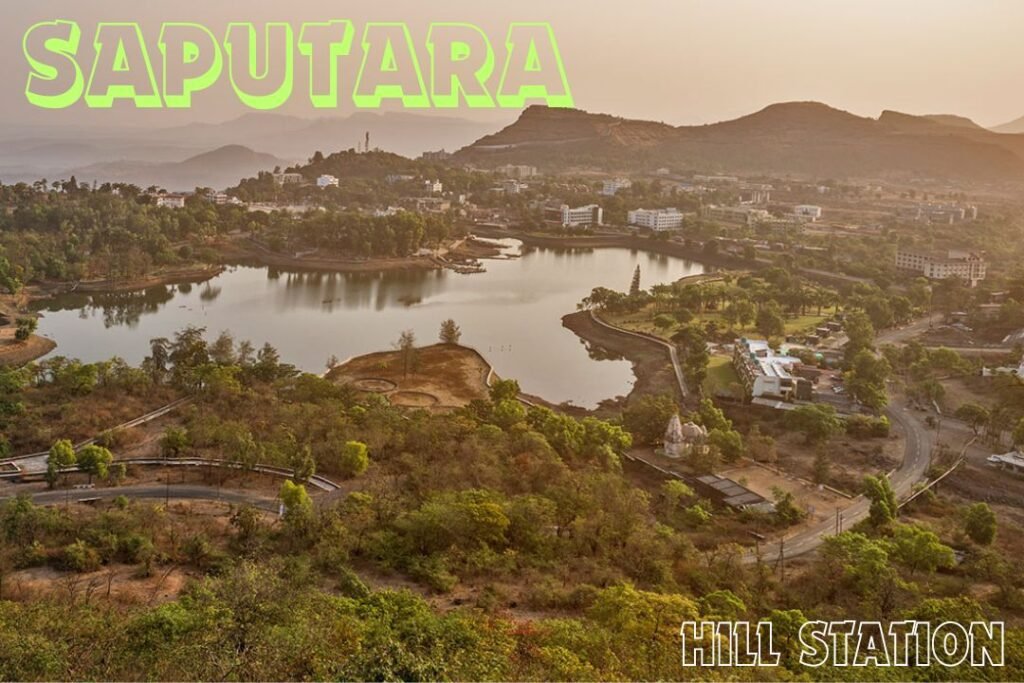
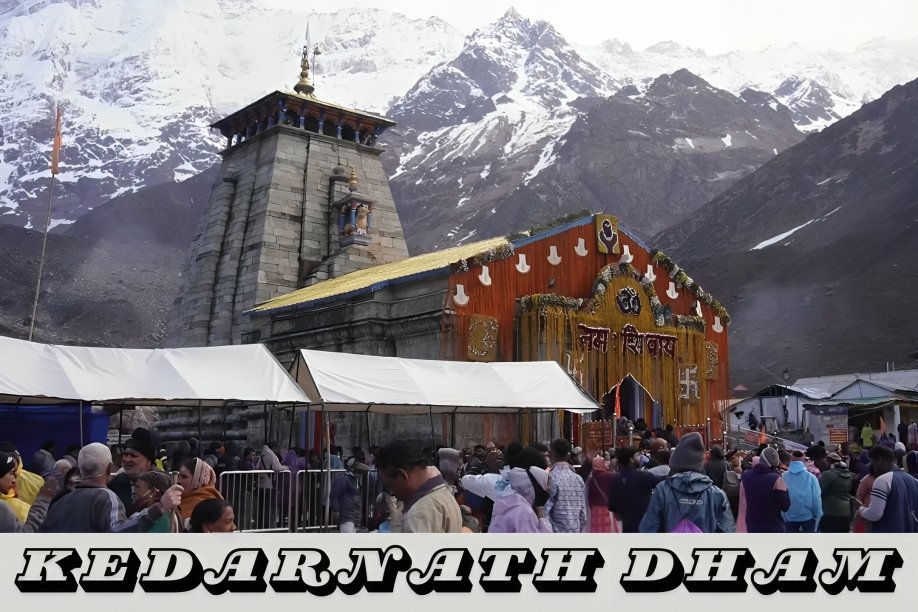
Pingback: Ellora Caves: The Ultimate Guide of 8 Hidden Gems - GujjuTraveling
Pingback: Mahakaleshwar Temple: A Sanctuary of Divine Energy - GujjuTraveling
Pingback: Baidyanath Dham: The Heart of Divine Grace - GujjuTraveling
Pingback: Ahmedabad: India's Legendary 1st Heritage City - GujjuTraveling